Hobbywing Xerun XR10 Pro G2 Elite Handleiding
Hobbywing
Radiografisch bestuurbaar speelgoed
Xerun XR10 Pro G2 Elite
Bekijk gratis de handleiding van Hobbywing Xerun XR10 Pro G2 Elite (2 pagina’s), behorend tot de categorie Radiografisch bestuurbaar speelgoed. Deze gids werd als nuttig beoordeeld door 6 mensen en kreeg gemiddeld 4.0 sterren uit 3.5 reviews. Heb je een vraag over Hobbywing Xerun XR10 Pro G2 Elite of wil je andere gebruikers van dit product iets vragen? Stel een vraag
Pagina 1/2

Release the
ON/OFF button
once the LED
flashes.
03
02
04
05
AT T ENT ION
This is an extremely powerful brushless motor system. For your safety and the safety of those around you, we strongly recommend removing the pinion gear attached to
the motor before performing calibration and programming functions with this system. It is also advisable to keep the wheels in the air when you turn on the ESC.
Cont./Peak Current
Motor Type
Applications
160A/1200A
Sensored / Sensorless Brushless Motors
1/10
th
Touring car & Buggy racing, 1/10
th
drift car & F1, 1/10
th
Rock Crawler
Motor Limit* Note 1
Model XERUN XR10 Pro G2
LiPo/NiMH Cells
BEC Output
Cooling Fan
Connectors
Size/Weight
Programming Port
2S LiPo/4-6S NiMH
5-7.4V Adjustable, Continuous Current of 5A (Switch-mode)
Powered by the stable BEC voltage of 5-7.4V
Input End: No Connectors; Output End: No Connectors
37.5x30.9x32.5mm (w/Fan&Fan Shroud) / 95g (w/ wires)
PRG/FAN Port (*powered by battery voltage)
Brushless Motor Limit with 2S LiPo/6S NiMH: (Touring Car) T 4.5T, (Buggy) T≥ ≥5.5T
• 10 select-to-use profiles applicable to all 1/10th RC car racing.
• Internal electronic key switch for long service life, high reliability; and the external switch port for connecting an external switch (included in the product box) is applicable to different situations.
• Built-in switch mode BEC with a maximum output of 10A and voltage adjustable from 5V to 7.4V (step: 0.1V) for usage with servos & other devices require different voltages.
• 32-bit microprocessor with more powerful processing capability guarantees stable control and rapid response.
• Separate PRG/FAN port is able to power an external fan for maximize cooling performance or connect a LCD program box or WiFi module to the ESC.
• With the New WIFI express module from Hobbywing, users are able to program parameters, upgrade firmware and check relevant data during the event using either the iPhone or
Android devices.
• Variable frequency regulation of PWM & brake frequencies allows users to precisely regulate the driving & braking forces (of the motors).
• Expanded range of the max. brake force brings in the active brake ranges from 101% to 150%.
• Softening function (HOBBYWING-initiated) for milder or wilder driving control and better driving efficiency.
• Switchable motor direction (CCW/CW) for various chassis.
• Multiple protections: low-voltage cutoff protection, ESC and motor thermal protection, and fail safe (throttle signal loss protection),reverse polarity protection (the external standard
cappack will still be damaged if battery reversal occurs).
• Data logging for recording the maximum ESC/motor temperature, motor speed/RPM, and others in real time.
• Firmware upgrade via Hobbywing multifunction LCD program box or WiFi Express (item sold separately).
• To avoid short circuits, ensure that all wires and connections must be well insulated before connecting the ESC to related devices.
• Ensure all devices are well connected to prevent poor connections and avoid damage to your electronic devices.
• Read through the manuals of all power devices and chassis and ensure the power configuration is rational before using this unit.
• Please use a soldering iron with the power of at least 60W to solder all input/output wires and connectors.
• Do not hold the vehicle in the air and rev it up to full throttle, as rubber tires can “expand” to extreme size or even crack to cause serious injury.
• Stop immediate usage once the casing of the ESC exceeds 90 as this may cause damage to both the ESC and motor. Hobbywing recommends setting the “ESC Thermal ℃/194℉
Protection” to 105℃/221℉ (this refers to the internal temperature of the ESC).
• Users must always disconnect the batteries after use as the current on the ESC is consuming continuously if it is connected to the batteries (even if the ESC is turned off). The battery will
completely be discharged and may result in damage to the battery or ESC when it is connected for a long period of time. This WILL NOT be covered under warranty.
06
1
2
3
Attention! The temperature of its Aluminum housing may be very high when there is heavy load. For precaution, we recommend users to have a fan blown towards the ESC.
(Start with the ESC turned off), press the ON/OFF button to turn on the ESC (the indication LED comes on); and press the ON/OFF button again to turn off the ESC (the indication LED dies out).
Note 3: Do not turn off the ESC when the motor is spinning. The sudden stoppage may result in unwanted damage to both the motor and ESC. If there is an emergency, battery plugs can be
pulled out to switch the ESC off.
1A. Running Mode
Option 1: Forward with Brake
Racing mode. It has only forward and brake functions.
Option 2: Forward/ Reverse with Brake
This option is known to be the “training” mode with “Forward/ Reverse with Brake” functions. Hobbywing has adopted the “DOUBLE-CLICK” method, that is your vehicle only brakes on
the 1st time you push the throttle trigger forward (brake) (1st push). The motor stops when you quickly release the throttle trigger and then re-push the trigger quickly (2nd push), only
then the vehicle will reverse. The reverse function will not work if your car does not come to a complete stop. The vehicle only reverses after the motor stops. This method is for preventing
vehicle from being accidentally reversed.
Option 3: Forward and Reverse
This mode is often used by special vehicles (rock crawler). It adopts the “SINGLE-CLICK” method. The vehicle will reverse immediately when you push the throttle trigger forward (brake).
1B. Max. Reverse Force
The reverse force of the value will determine its speed. For the safety of your vehicle, we recommend using a low amount.
1C. Cutoff Voltage
Sets the voltage at which the ESC lowers or removes power to the motor in order to either keep the battery at a safe minimum voltage (for LiPo batteries). The ESC monitors the battery
voltage all the time, it will immediately reduce the power to 30% (in 3 seconds) and cut off the output 10 seconds later when the voltage goes below the cutoff threshold. The RED LED
will flash a short, single flash that repeats (☆, ☆, ☆) to indicate the low-voltage cutoff protection is activated. Please set the “Cutoff Voltage” to “Disabled” or customize this item if you
are using NiMH batteries.
Option 1: Disabled
The ESC does not cut the power off due to low voltage. We do not recommend using this option when you use any LiPo battery as you will irreversibly damage the product. You need to
select this option when you are using a NiMH pack.
Option 2: Auto
The ESC calculates the corresponding cutoff voltage as per the number of LiPo cells it detects and the “3.3V/cell” rule. For example, if the ESC detects a 2S, the cutoff voltage for the
battery shall be 6.6V.
Option 3: Customized
The customized cutoff threshold is a voltage for the whole battery pack (adjustable from 3.0V to 11.1V). Please calculate the value as per the number of LiPo cells you are using.
For example, when you use a 2S and you want the cutoff voltage for each cell is 2.8V, you will need to set this item to 5.6V.
1D. ESC Thermal Protection
The output from the ESC will be cut off with the value you have preset.
The GREEN LED flashes ( ) when the ESC temperature reaches to the preset value. The output will not resume until the ESC temperature gets down. ☆, ☆, ☆
Warning! Please do not disable this function unless you’re in a competition. Otherwise the high temperature may damage your ESC and even your motor.
1E. Motor Thermal Protection
The GREEN LED flashes ( ) when the motor temperature reaches to the preset value. The output will not resume until the motor temperature gets down. ☆☆ ☆☆ ☆☆, ,
Warning! Please do not disable this function unless you’re in a competition. Otherwise the high temperature may damage your motor and even your ESC. For non-Hobbywing motor,
the ESC may get this protection activated too early/late because of the different temperature sensor inside the motor. In this case, please disable this function and monitor the motor
temperature manually.
1F. BEC Voltage
Option 1: 6.0V
It’s applicable to ordinary servos. Do not use this option with high voltage servos; otherwise your servos may not function normally due to insufficient voltage.
Option 2: 7.4V
It’s applicable to high voltage servos. Do not use this option with ordinary servos; otherwise your servos may be burnt due to high voltage.
1G. Remote Off
Option 1: Enabled
Users can simply push and hold the brake trigger for 6 seconds. This option allows the user to turn off the ESC without pushing the ON/OFF button switch.
Option 2: Disabled
Users must turn off the ESC by pressing the ON/OFF switch button from the ESC.
1H. Sensor Mode
Option 1: Full Sensored
The power system will work in the “sensored” mode at all times. The efficiency and drivability of this mode is at the highest.
Option 2: Sensored/Sensorless Hybrid
The ESC operates the motor in sensored mode during the low-speed start-up process, followed by switching to operating the motor in the “sensorless” mode. This dual drive mode is
applicable to 4WD SCT vehicles using 4 pole motors.
Warning! Do not select the option 1 if you are using a non-Hobbywing matching motor, when it’s a 4 pole sensored motor, otherwise you may damage your ESC and motor.
1I. Motor Rotation/Direction
With the motor shaft faces you (the rear end of the motor is away from you), increase the throttle input, the motor (shaft) will rotate in the CCW/CW direction if the “Motor
Rotation/Direction” set to “CCW/CW”. Generally, the vehicle runs forward when the motor (shaft) rotates in the CCW direction. However, some vehicles only run forward when the motor
rotates in the CW direction due to the different chassis design. In that case, you only need to set the “Motor Rotation/Direction” to “CW).
2A. Throttle Rate Control
This item is used to control the throttle response. It can be adjustable from 1 to 30 (step: 1), the lower the throttle rate, the more the limit will be on the throttle response. A suitable rate
can help driver to control his vehicle properly during the starting-up process. Generally, you can set it to a high value to have a quick throttle response if you are proficient at throttle control.
2B. Throttle Curve
The throttle curve parameter reconciles the position of the throttle trigger (in throttle zone) and the actual ESC throttle output. It is linear by default and we can change it to non-linear via
adjusting the throttle curve. For example, if adjust it to +EXP, the throttle output at the early stage will be higher (than the output when the curve is linear); if it is adjusted to –EXP,
the throttle output at the early stage will be lower (than the output when the curve is linear).
1. Turn on the transmitter, ensure all parameters (D/R, Curve, ATL) on the throttle channel are at default (100%). For transmitter without LCD,
please turn the knob to the maximum, and the throttle “TRIM” to 0. Please also turn the corresponding knob to the neutral position.
For FutabaTM transmitter, the direction of throttle channel shall be set to “REV”, while other radio systems shall be set to “NOR”. Please ensure
the “ABS/braking function” of your transmitter must be DISABLED.
2. Start by turning on the transmitter with the ESC turned off but connected to a battery. Holding the “ON/OFF” button, the RED LED on the ESC
starts to flash (Note 2: the motor beeps at the same time), and then release the ON/OFF button immediately.
Note 2: Beeps from the motor may be low sometimes, and you can check the LED status instead.
Press the ON/OFF button.
The Green LED flashes
three times and motor
emits “Beep-Beep-
Beep” tone.
Press the ON/OFF button.
The Green LED flashes
twice andmotor
emits “Beep-
Beep” tone.
3. Set the neutral point, the full throttle endpoint and the full brake endpoint.
• Leave transmitter at the neutral position, press the “ON/OFF” button, the RED LED dies out and the GREEN LED flashes 1 time and the motor beeps 1 time to accept the neutral position.
• Pull the throttle trigger to the full throttle position, press the “ON/OFF” button, the GREEN LED blinks 2 times and the motor beeps 2 times to accept the full throttle endpoint.
• Push the throttle trigger to the full brake position, press the “ON/OFF” button, the GREEN LED blinks 3 times and the motor beeps 3 times to accept the full brake endpoint.
4. The motor can be started 3 seconds after the ESC/Radio calibration is complete.
Move the throttle trigger
to the neutral position
Move the throttle trigger to the
end position of forward
Move the throttle trigger to the
end position of backward
Press the ON/OFF button.
The Green LED flashes
once and
motor emits
“Beep” tone.
Begin using your ESC by calibrating with your transmitter. We strongly recommend Hobbywing users to use the “Fail Safe” function on the radio system
and set (F/S) to “Output OFF” or “Neutral Position”. Example of calibrating Neutral range and Endpoint.
01
CA UT IONS
Congratulations and thank you for your trust in Hobbywing product. By
purchasing the XERUN XR10 Pro-G2, you have chosen a high
performance sensored brushless electronic speed controller! This speed
controller is equipped with high-tech features to enhance your
experience with Hobbywing brushless power systems. Improper usage
and unauthorized modification to our product is extremely dangerous
and may damage the product and related devices. Please take your time
and read the following instructions carefully before you start using your
speed control. We have the right to modify our product design,
appearance, features and usage requirements without notification.
We, HOBBYWING, are only responsible for our product cost and nothing
else as result of using our product.
AT T ENT ION
USER MANUAL
XERUN XR10 Pro G2
Brushless Electronic Speed Controller
Note 1: The recommended T counts are only applicable with the standard 3650/540 size (3 slot 2 pole) motors when ESCs are in blinky mode.
1. Motor Wiring
The motor wiring is different between the sensored and the sensorless; please only follow the introductions below.
• Sensored Motor Wiring
There is strict wiring order from the ESC to the motor, the three A/B/C ESC wires must connect to the three A/B/C motor wires correspondingly. Next, connect the ESC sensor port and
the motor sensor port with the stock 6-pin sensor cable. If you don’t plug the sensor cable in, your ESC will still work in sensorless mode even if you’re using a sensored motor.
• Sensorless Motor Wiring
Users do not need to be worried in regards to the connectivity with the A/B/C(ESC and motor) as there is no polarity. You may find it necessary to swap two wires if the motor runs in
reverse.
2. Receiver Wiring
The throttle control cable on the ESC has to be plugged into the throttle (TH) channel on the receiver. The throttle control cable has an output voltage of 6V/7.4V to the receiver and
steering servo, hence, no separate battery can be connected to the receiver. Otherwise, your ESC may be damaged.
3. Battery Wiring
Proper polarity is essential. Please ensure positive (+) connects to positive (+), and negative (-) connects to negative (-) when plugging in the battery! When reverse polarity is applied to
the ESC from the battery, the external standard cappack will still be damaged.
Note 4: Item 4C (Boost Start RPM) & item 4D (Boost End RPM) are not programmable if item 4B (Timing Activation) is set to “Auto”.
The PWM Drive Frequency, Brake Frequency, Brake Control, Boost Timing, Turbo Timing and relevant items are not programmable ( that's item 2E, 3F, 3G and 8 items from 4A to 5D are
not programmable) when Sensor Mode (Item 1H) is set to "Sensored/Sensorless Hybrid".
Battery
Electronic Speed Controller
Receiver
Motor
Orange (C)
Blue (A)
Sensor port of motor
Sensor wire
Yellow (B)
20190530
Parameter ValuesSection Item Programmable Items
Forward and ReverseForward/ Reverse with Brake
General SettingThrottle ControlBrake ControlTiming
1A Running Mode Forward with Brake
3.0-7.4V Adjustable (Step: 0.1V)Auto (3.3V/Cell)1C Cutoff Voltage Disabled
75%50%1B Max. Reverse Force 25% 100%
Disabled
125 /257℃ ℉1D ESC Thermal Protection 105 /221℃ ℉
8%6%2C Neutral Range 4%
HybridTraditional
3G Brake Control Linear
Auto4B Boost Timing Activation RPM
4K2K
2E PWM Drive Frequency 1K
1F BEC Voltage 5V-7.4V Adjustable (Step:0.1V)
2A Throttle Rate Control 1-30 Adjustable (Step: 1)
2D Coast 0%-20% Adjustable (Step: 1%)
2F Softening Value 0-30° Adjustable (Step: 1°)
3A Drag Brake Force 0%-100% Adjustable (Step: 1%)
3C Initial Brake Force 0%-50% Adjustable (Step:1%) =Drag brake
3B Max. Brake Force 0%-150% Adjustable (Step: 1%)
4A Boost Timing 0-64° Adjustable (Step: 1°)
4C Boost Start RPM 500-35000RPM (Step: 500RPM)
5A Turbo Timing 0-64° Adjustable (Step: 1°)
4D Boost End RPM 3000-60000RPM (Step: 500RPM)
3D Brake Rate Control 1-20 Adjustable (Step: 1)
Disabled
125 /257℃ ℉1E Thermal Protection 105 /221℃ ℉
Disabled1G Remote Off Enabled
CW1I Motor Rotation CCW
Customized2B Throttle Curve Linear
Customized3E Brake Curve Linear
Sensored/Sensorless Hybrid1H Sensor Mode Full Sensored
8K 12K 16K 24K 32K Customized
2K1K3F Brake Frequency 0.5K 4K 8K 16K
Instant
20%10%2G Softening Range 0% 25% 30% 35% 40% 45% 50% 55% 60% 65% 70% 75%
0.1s0.05s
3deg/0.1s 6deg/0.1s 9deg/0.1s 12deg/0.1s 15deg/0.1s 18deg/0.1s 21deg/0.1s 24deg/0.1s 27deg/0.1s 30deg/0.1s
5B Turbo Delay Instant 0.15s 0.2s 0.25s 0.3s 0.35s 0.4s 0.45s 0.5s 0.6s 0.7s 0.8s 0.9s 1.0s
5C Turbo Increase Rate
Instant3deg/0.1s 6deg/0.1s 9deg/0.1s 12deg/0.1s 15deg/0.1s 18deg/0.1s 21deg/0.1s 24deg/0.1s 27deg/0.1s 30deg/0.1s5D Turbo Decrease Rate
Customized

Trouble(s) Solution(s)Possible Causes
1. No power was supplied to the ESC.
2. The ESC switch was damaged.
The throttle cable was reversely plugged into
the TH channel or plugged into wrong channel on the receiver.
1. The (ESC-to-motor) wiring order was incorrect.
2. Your chassis is different from popular chassis.
1. The receiver was influenced by some foreign interference.
2. The ESC entered the LVC protection.
3. The ESC entered the thermal shutdown protection.
1. The throttle neutral position on your transmitter
was actually in the braking zone.
2. Set the “Running Mode” improperly.
3. The ESC was damaged.
1. Some soldering between the motor and the ESC
was not good.
2. The ESC was damaged (some MOSFETS were burnt).
Check if all ESC & battery connectors have been well soldered or
firmly connected.
Plug the throttle cable into the throttle channel (CH2) by referring to
relevant mark shown on your receiver.
1. Swap any two (ESC-to-motor) wires if you are using a sensorless motor.
2. There is nothing you can do if you are using a sensored motor and your
chassis is different from popular chassis.
1. Check all devices and try to find out all possible causes, and check the
transmitter’s battery voltage.
2. The RED LED keeps flashing indicating the LVC protection is activated,
please replace your pack.
3. The GREEN LED keeps flashing indicating the thermal protection is
activated, please let your ESC cool down before using it again.
1. Recalibrate the throttle neutral position. No LED on the ESC will come
on when the throttle trigger is at the neutral position.
2. Set the “Running Mode” to “Fwd/Rev with Brk “.
3. Contact the distributor for repair or other customer service.
1. Check all soldering points, please re-solder if necessary.
2. Contact the distributor for repair or other customer service.
1. Change another pack with great discharging capability.
2. Change a low-speed motor, or increase the FDR.
3. Set the punch/start mode to a low level.
1. Check if the sensor cable is loose or poor contact issue exists.
2. Hall sensor inside the motor is damaged.
The ESC was unable to start the motor, but the
RED LED on the ESC turned on solid.
The vehicle ran backward when you pulled the
throttle trigger towards you.
The ESC was unable to start the status LED, the
motor, and the cooling fan after it was powered on.
The motor stuttered but couldn’t start.
The vehicle could run forward (and brake),
but could not reverse.
The motor got stuck or stopped when increasing
the throttle during the starting-up process.
The RED & GREEN LEDS on the ESC flashed rapidly
at the same time when the throttle trigger was at
the neutral position.
The motor suddenly stopped or significantly
reduced the output in operation.
1. Poor discharging capability of the pack.
2. The RPM of the motor was too high, or the FDR
was too low.
3. Set the "Punch/Start Mode" to a high level.
(When pairing with a sensored motor) the ESC
automatically switched to sensorless mode
when it detected incorrect signal from Hall sensor.
1. Check if the wiring order is A-A, B-B, and C-C.
2. Contact the distributor for repair or other customer service.
The motor stuttered but couldn’t start. 1. The (ESC-to-motor) wiring order was incorrect.
2. The ESC was damaged.
08
09
Option 2: Auto
In Auto mode, the ESC adjusts the Boost Timing dynamically as per the throttle amount. Only at full throttle, the actual Boost Timing is the value you had previously set.
4C. Boost Start RPM
This item defines the RPM at which Boost Timing is activated. For example, when the Boost Start RPM is set to 5000, the ESC will activate the corresponding Boost Timing when the
RPM goes above 5000. The specific value is determined by the Boost Timing and the Boost End RPM you had previously set.
4D. Boost End RPM
This item defines the RPM at which Boost Timing (you specifically set) is applied. For example, when Boost T iming is set to 10 degrees and the Boost End RPM to 15000, the ESC will
activate the Boost Timing of 10 degrees when the RPM goes above 15000. The ESC will adjust the Boost Timing accordingly as per the actual RPM when the RPM goes below 15000.
5A. Turbo Timing
This item is adjustable from 0 degree to 64 degrees, the corresponding turbo timing (you set) will initiate at full throttle. It’s usually activated on long straightaway and makes the
motor unleash its maximum potential.
5B. Turbo Delay
When “TURBO DELAY” is set to “INSTANT”, the Turbo Timing will be activated right after the throttle trigger is moved to the full throttle position. When other value(s) is applied,
you will need to hold the throttle trigger at the full throttle position (as you set) till the Turbo Timing initiates.
5C. Turbo Increase Rate
This item is used to define the “speed” at which Turbo Timing is released when the trigger condition is met. For example, “6 degs/0.1sec” refers to the Turbo Timing of 6 degrees that
will be released in 0.1 second. Both the acceleration and heat is higher when the “Turbo increase rate” is of a larger value.
5D. Turbo Decrease Rate
After the Turbo T iming is activated and the trigger condition turns to not be met (i.e. vehicle slows down at the end of the straightaway and gets into a corner, full throttle turns to
partial throttle, the trigger condition for Turbo Timing turns to be not met), if you disable all the Turbo T iming in a moment, an obvious slow-down like braking will be felt and cause
the control of vehicle to become bad. If the ESC can disable the Turbo Timing at some “speed”, the slow-down will be linear and the control will be improved.
Warning!Boost Timing & Turbo Timing can effectively improve the motor efficiency; they are usually used in competitions. Please take some time to read this manual and then set
these two items carefully, monitor the ESC & motor temperatures when you have a trial run and then adjust the Timing and FDR accordingly as aggressive Timings and FDR may cause
your ESC or motor to be burnt.
1) Program your ESC with a multifunction LCD program box
You can program this XR10 Pro ESC via a multifunction LCD program box or via a multifunction LCD program box & a PC (HOBBYWING USB LINK software needs to be installed
on the PC). Before programming, you need to connect your ESC and the LCD program box via a cable with two JR male connectors and turn on the ESC; the boot screen will
show up on the LCD. Press any button on the program box to initiate the communication between your ESC and the program box. Seconds later, “CONNECTING ESC” will be
displayed, and indicates the following parameters. You can adjust the setting via “ITEM” & “VALUE” buttons, and press the “OK” button to save new settings to your ESC.
2) Program your ESC with a WiFi Module
The XR10 Pro ESC can also be programmed via a WiFi module along with smart phone devices (HOBBWYING WiFi LINK software needs to
be installed on the smart phone). Before programming, users will need to plug the programming cable on the WiFi module into the
programming port on ESC and switch on the ESC. For detailed information about ESC programming via WiFi module, please refer to the
user manual of Hobbywing’s WiFi Express.
Attention! This ESC has a separate programming port. Please don’t use the throttle control cable (also called Rx cable) on the ESC to
connect the program box; otherwise the program box won’t function.
3) Data Checking
The ESC is able to record the maximum ESC temperature, maximum motor temperature, minimum battery voltage and maximum motor speed in operation. It automatically saves
the recorded data to the designated area when you turn off the ESC after a run. You can check those data via a multifunction LCD program box whenever necessary.
Users need to switch on the ESC after connection between the program box and the ESC has been established. Press the “R/P” button on any “item” page followed by pressing
the “R/P” button again multiple times. The following 5 item pages will be displayed circularly: Mode → ESC Temperature Motor Temperature Min Voltage Max RPM.→ → →
Attention!
• Press the “VALUE” button on any data-recording page can get you into the next preset mode. Please note that improper operation will get you into other preset mode(s).
• Press the “ITEM” button on any data-recording page can get you to the parameter setting page of the current preset mode; press the “R/P” button if you want to return to
the data-recording page
07
1. During the Start-up Process
• The RED LED turns on solid indicating the ESC doesn’t detect any throttle signal or the throttle trigger is at the neutral position.
• The GREEN LED flashes rapidly indicating the neutral throttle value stored on your ESC may be different from the current value stored on the transmitter. When this happens,
re-calibrate the throttle range.
2. In Operation
• The RED LED turns on solid and the GREEN LED dies out when the throttle trigger is in the throttle neutral zone. The RED LED will blink slowly (to confirm with ROAR’s Sportman
(or Zero Timing) rules) if the total value of Boost Timing and Turbo timing is 0.
• The RED LED dies out and the GREEN LED blinks when your vehicle runs forward. The GREEN LED turns solid when pulling the throttle trigger to the full (100%) throttle endpoint.
• The RED LED dies out and the GREEN LED blinks when you brake your vehicle. The GREEN LED turns solid when pushing the throttle trigger to the full brake endpoint and setting the
“maximum brake force” to 100%.
• The RED LED dies out, the GREEN LED blinks when you reverse your vehicle. The GREEN LED turns solid when pushing the throttle trigger to the full brake endpoint and setting the
“reverse force” to 100%.
3. When Some Protection is Activated
• The RED LED flashes a short, single flash and repeats “ ” indicating the low voltage cutoff protection is activated.☆, , ☆ ☆
• The GREEN LED flashes a short, single flash and repeats “ ” indicating the ESC thermal protection is activated.☆, , ☆ ☆
• The GREEN LED flashes a short, double flash and repeats “ ” indicating the motor thermal protection is activated.☆☆ ☆☆ ☆☆, ,
• The RED & GREEN LEDS flash a short, single flash and repeats “ ” at the same time indicating the drive mode has been automatically switched to sensorless mode from ☆, , ☆ ☆
senored mode because of abnormal sensor signal when pairing the ESC with a sensored motor.
Note: this section is applicable to the situation when the motor limit is regulated and the ESC timing is not regulated.
1) You can get a higher top end speed via the following methods:
• Decrease the FDR (by using a bigger pinion within the reasonable range)
• Increase the Timing. If you only want to increase the top end speed on straightaway, you can increase the Turbo timing. If you want to increase the speed at different sections of
the entire track, you can increase the Boost timing.
• Change another battery with higher discharge capability.
2) You can get a higher acceleration via the following methods:
• Increase the FDR (by using a smaller pinion within the reasonable range).
• Increase the throttle acceleration.
• Increase the Boost Timing.
• Decrease the Boost Start RPM & the Boost End RPM.
• Decrease the Turbo Delay.
• Increase the Turbo Increase Rate.
3) You can get a lower motor temperature and a longer run time via the following methods:
• Increase the FDR (by using a smaller pinion within the reasonable range)
• Decrease the Timing
• Increase the Boost Start RPM & the Boost End RPM.
• Increase the Turbo Delay
• Decrease the Turbo Decrease Rate.
Note: Please adjust the FDR and other parameters slightly (feel and test the ESC and motor temperatures after every adjustment.), keep trying different settings until you get the
“satisfactory” speed and the acceptable motor/ESC temperature. You can also save the “setting” for future reference or use.
RPM (Motor Speed)
Actual Boost Timing
<10000
0 Degree
10001-11000
1 Degree
11001-12000
2 Degrees
12001-13000
3 Degrees
13001-14000
4 Degrees
14001-15000
5 Degrees
>15000
5 Degrees
2
1
5
• Restore the default values with a multifunction LCD program box
After connecting the program box to the ESC, continue to press the “ITEM” button on the program box until you see the “RESTORE DEFAULT” item, and press “OK” to factory
reset your ESC.
• Restore the default values with a WiFi module (& WiFi Link)
After connecting the WiFi module to the ESC, open the HOBBYWING WiFi LINK software on your smart phone, select “Parameters” followed by “Factory Reset” to reset the ESC.
6
2C. Neutral Range
As not all transmitters have the same stability at “neutral position”, please adjust this parameter as per your preference. You can adjust to a bigger value when this happens.
2D. Coast
The RPM of the motor will be lowered gradually when throttle is reduced. The vehicle will not reduce speed abruptly when the throttle is reduced to return to the neutral position.
The bigger the value, the more the “COAST” will be felt. Example, COAST of 0 deactivates, and a COAST of 20% would be the maximum amount of COAST.
What is COAST?
When a vehicle has a larger final drive ratio, the tendency of having a “drag” feel is higher. The “COAST” technology is to allow the car to roll (coast) even when the final drive ratio
is high. The Coast function brings better and smoother control feeling to racers. Some drivers will refer to this to the traditional brushed motors.
Note 5: The “Coast” will be void (even if you set it to any value besides 0) if the above “drag brake” is not “0%”.
2E. PWM Drive Frequency
The acceleration will be more aggressive at the initial stage when the drive frequency is low; a higher drive frequency is smoother but this will create more heat to the ESC.If set this
item to "Customized", then the PWM frequency can be adjusted to a variable value (which ranges from 0K to 32K) at any 0-100% throttle input, Please choose the frequencies as per
the actual test results of your vehicles.
2F. Softening Value
It allows users to fine-tune the bottom end, change the driving feel, and maximize the driving efficiency at different track conditions. The higher the "Softening Value ", the milder
the bottom end. In Modified class, drivers often feel the power of the bottom end is too aggressive. Little throttle input usually brings too much power to the car and make it hard to
control at the corners, so HOBBYWING creates this softening function to solve the issue.
Note 6: You can increase the motor mechanical timing accordingly after you set the softening value. Every time you increase the softening value by 5 degrees, you can increase the
mechanical timing by 1 degree. For example, if you set the softening value to 20 degrees, then you can increase the mechanical timing by 4 degrees. Please note that you will never
increase the mechanical timing by over 5 degrees.
2G. Softening Range
It's the range to which "Softening Value” starts and ends. For example, 0% to 30% will be generated when the user pre-programs the "Softening Range" at a value of 30%.
3A. Drag Brake
It is the braking power produced when releasing from full speed to neutral position. This is to simulate the slight braking effect of a neutral brushed motor while coasting. It’s not
recommended for buggy and monster truck.
(Attention! Drag brake will consume more power and heat will be increased, apply it cautiously.)
3B. Max. Brake Force
This ESC provides proportional braking function; the braking effect is decided by the position of the throttle trigger. It sets the percentage of available braking power when full brake
is applied. Large amount will shorten the braking time but it may damage your pinion and spur.
3C. Initial Brake Force
It is also known as “minimum brake force”. It is the force when pushing throttle trigger from neutral zone to the initial brake position. To get a smoother braking effect, the default is
equal to the drag brake.
3D. Brake Rate Control
It’s adjustable from 1 to 20 (step: 1), the lower the brake rate, the more limit on the brake response. A suitable rate can aid the driver to brake his vehicle correctly. Generally, you can
set it to a high value to have a quick brake response.
3E. Brake Curve
This item is used for regulating the relation between the throttle range in brake zone and the brake force. The default setting is linear. You can change it to non-linear via a LCD
program box and a PC (HOBBYWING USB LINK software needs to be installed on the PC.) for different braking effect.
3F. Brake Frequency
The brake force will be larger if the frequency is low; you will get a smoother brake force when the value is higher.If set this item to "Customized", then the brake frequency can be
adjusted to a variable value (which ranges from 0K to 16K) at any 0-100% throttle input, Please choose the frequencies as per the actual test results of your vehicles.
3G. Brake Control
Option 1: Linear
Hobbywing has recommended using this mode under all circumstances. The braking effect is a bit weaker in this mode than in Traditional brake mode, but it’s easy to control and
brings great control feel.
Option 2: Traditional
This brake mode is the same as to the XERUN series of ESCs, the brake force is stronger.
Option 3: Hybrid
The ESC switches the brake mode between Linear and Traditional as per the vehicle speed to prevent the slide (between tires and track) from affecting the braking effect.
Note 6: Please select the right mode for your vehicle as per the track condition, motor performance, and etc.
4A. Boost Timing
It is effective within the whole throttle range; it directly affects the car speed on straightaway and winding course. The ESC adjusts the timing dynamically as per the RPM
(when “Boost Timing Activation” set to “RPM”) or throttle amount (when “Boost Timing Activation” set to “Auto”) in the operation. The Boost Timing is not constant but variable.
4B. Boost Timing Activation
Option 1: RPM
In RPM mode, the ESC adjusts the Boost Timing dynamically as per the motor speed (RPM). The actual Boost Timing is 0 when the RPM is lower than the Boost Start RPM. The Boost
Timing changes as per the RPM when the RPM change is between the Boost Start RPM and the Boost End RPM. For example, if the Boost T iming is set to 5 degrees and the Boost
Start RPM is 10000, the Boost End RPM is 15000. The Boost Timing corresponds to different RPM is shown below. When the RPM is higher than the Boost End RPM, the actual Boost
Timing is the value you had previously set.
External Programming
Port for Connecting
Program Card or WIFI
module.
In order to make one firmware applicable to all different racing conditions, there are ten “easy-to-select” preset modes (as shown below). Users are able to change the settings of the
modes provided (and rename those modes) as per the control feel, track, and etc. For example, the name can be changed from “Modify” to “TITI2019_MOD_4.5” to indicate the race was
ran with a 4.5T motor at 2019 TITC. This can be saved for future reference as well.
Mode #
1
2
3
4
5
6
7
8
9
10
Modes/Profiles
Zero Timing
TC-Modify
Buggy-2WD-Modify
Bubby-4WD-Modify
Practice
Stock-13.5T
Stock-17.5T
SCT-4 Pole
Crawler
Drift 2WD Carpet
Applications
All Stock racing requiring users to use Zero timing (/blinky) program on their ESCs.
Modify class of 1/10th touring car racing
Modify class of 1/10th 2WD buggy racing
Modify class of 1/10th 4WD buggy racing
(With Reverse function activated,) practice and sport
13.5T Open Stock class of 1/10th touring car racing
17.5T Open Stock class of 1/10th touring car racing
1/10th 4WD SCT using 4 pole motor
1/10th rock crawler
1/10th drift 2WD car on Carpet
Preset Modes for Different Racing:
Default Settings of Different Preset Modes:
4
1A
1B
1C
1D
1E
1F
1G
1H
1I
2A
2B
2C
2D
2E
2F
2G
3A
3B
3C
3D
3E
3F
3G
4A
4B
4C
4D
5A
5B
5C
5D
For/Brake
25%
Auto
105 /221℃ ℉
105 /221℃ ℉
6.0V
Enabled
Full
Sensored
CCW
30
Linear
6%
0%
2K
0 Deg
0%
0%
100%
=Drag Brake
20
Linear
1K
Traditional
0 Deg
RPM
6000
22500
0 Deg
0.3
12
24
For/Brake
25%
Auto
105 /221℃ ℉
105 /221℃ ℉
6.0V
Enabled
Full
Sensored
CCW
20
Linear
6%
0%
8K
0 Deg
0%
10%
87%
=Drag Brake
10
Linear
1K
Linear
0 Deg
RPM
15000
25000
20 Degs
0.1
18
24
For/Brake
25%
Auto
105 /221℃ ℉
105 /221℃ ℉
6.0V
Enabled
Full
Sensored
CCW
10
Linear
6%
0%
8K
0 Deg
0%
0%
87%
=Drag Brake
20
Linear
1K
Linear
0 Deg
RPM
6000
22500
0 Deg
0.3
12
24
For/Brake
25%
Auto
105 /221℃ ℉
105 /221℃ ℉
6.0V
Enabled
Full
Sensored
CCW
15
Linear
6%
0%
8K
0 Deg
0%
0%
87%
=Drag Brake
20
Linear
1K
Linear
0 Deg
RPM
6000
22500
10 Degs
0.3
12
24
For/Rev/Brake
25%
Auto
105 /221℃ ℉
105 /221℃ ℉
6.0V
Enabled
Full
Sensored
CCW
15
Linear
6%
0%
8K
0 Deg
0%
0%
100%
=Drag Brake
20
Linear
1K
Linear
0 Deg
RPM
6000
22500
0 Deg
0.3
12
24
For/Brake
25%
Auto
105 /221℃ ℉
105 /221℃ ℉
6.0V
Enabled
Full
Sensored
CCW
30
Linear
6%
0%
4K
0 Deg
0%
5%
87%
=Drag Brake
20
Linear
1K
Linear
30 Degs
Auto
4000
12000
25 Degs
0.2
24
18
For/Brake
25%
Auto
105 /221℃ ℉
105 /221℃ ℉
6.0V
Enabled
Full
Sensored
CCW
30
Linear
6%
0%
4K
0 Deg
0%
5%
87%
=Drag Brake
20
Linear
1K
Linear
30 Degs
Auto
2000
8000
35 Degs
0.1
24
18
For/Brake
25%
Auto
105 /221℃ ℉
105 /221℃ ℉
6.0V
Enabled
Hybrid
CCW
15
Linear
6%
0%
8K
0 Deg
0%
0%
75%
=Drag Brake
10
Linear
1K
Linear
0 Deg
RPM
6000
22500
10 Degs
Instant
12
24
For/Rev
100%
Auto
105 /221℃ ℉
105 /221℃ ℉
6.0V
Disabled
Full
Sensored
CCW
20
Linear
6%
0%
4K
0 Deg
0%
100%
100%
=Drag Brake
20
Linear
1K
Traditional
0 Deg
RPM
6000
22500
0 Deg
0.3
12
24
For/Rev/Brake
25%
Auto
105 /221℃ ℉
105 /221℃ ℉
6.0V
Enabled
Full
Sensored
CCW
20
Linear
6%
0%
4K
0 Deg
0%
0%
100%
=Drag Brake
10
Linear
1K
Traditional
10 Degs
Auto
6000
22500
24 Degs
0.3
Instant
Instant
Running Mode
Max. Reverse Force
Cutoff Voltage
ESC Thermal Protection
Motor Thermal Protection
BEC Voltage
Remote Off
Sensor Mode
Motor Rotation
Throttle Rate Control
Throttle Curve
Neutral Range
Coast
PWM Drive Frequency
Softening Value
Softening Range
Drag Brake
Max. Brake Force
Initial Brake
Brake Rate Control
Brake Curve
Brake Frequency
Brake Control
Boost Timing
Boost Timing Activation
Boost Start RPM
Boost End RPM
Turbo Timing
Turbo Delay (sec)
Turbo Increase Rate (deg/0.1sec)
Turbo Decrease Rate (deg/0.1sec)
Section Item Programmable Item Zero
Timing
Buggy
2WD-MOD
Buggy
4WD-MOD Practice Open-BL
13.5T
Open-BL
17.5T SCT-4 Pole Crawler Drift 2WD CarpetTC-Modify
General SettingThrottle ControlBrake ControlTiming
It’s important to select a proper gear ratio for your system , as improper ratio will cause damage to the ESC or it may even bring other big loss to you. Please refer to the recommended gear
ratios introduced in the user manual of your motor to pick a right ratio.
Product specificaties
| Merk: | Hobbywing |
| Categorie: | Radiografisch bestuurbaar speelgoed |
| Model: | Xerun XR10 Pro G2 Elite |
| Kleur van het product: | Zwart, zilver |
| Gewicht: | 88 g |
| Breedte: | 37.5 mm |
| Diepte: | 32.5 mm |
| Hoogte: | 30.9 mm |
| Soort: | Radio-Controlled (RC) Model Parts |
| Accu/Batterij voltage: | 7.4 V |
| Correct gebruik: | Car, Truck, Truggy |
| Merkcompatibiliteit: | Hobbywing |
| Aantal: | 1 |
| Upgraden van firmware mogelijk: | Ja |
| Type product: | Snelheidsregelaar |
| Batterijtechnologie: | Nikkel-Metaalhydride (NiMH) |
| Aantal batterijcellen: | 5-6 |
| AWG draad omvang: | 12 |
| Type elektronische toerentalregeling (ESC): | Borstelloos |
| ESC-programmeerondersteuning: | Ja |
Heb je hulp nodig?
Als je hulp nodig hebt met Hobbywing Xerun XR10 Pro G2 Elite stel dan hieronder een vraag en andere gebruikers zullen je antwoorden
Handleiding Radiografisch bestuurbaar speelgoed Hobbywing

29 Maart 2025

29 Maart 2025

27 Maart 2025

27 Maart 2025

27 Maart 2025

27 Maart 2025

27 Maart 2025
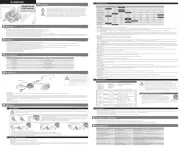
27 Maart 2025

27 Maart 2025
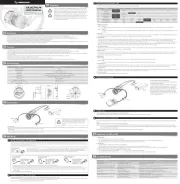
27 Maart 2025
Handleiding Radiografisch bestuurbaar speelgoed
- Jada
- Blackzon
- Traxxas
- Spin Master
- TacTic
- Maginon
- RC4WD
- Silvergear
- MJX
- HPI Racing
- Conrad
- Amewi
- Axial
- Hangar 9
- FlySky
Nieuwste handleidingen voor Radiografisch bestuurbaar speelgoed
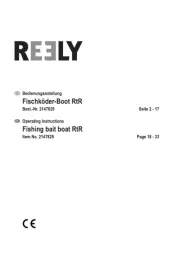
1 September 2025
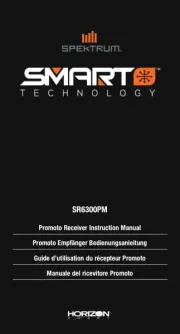
1 September 2025
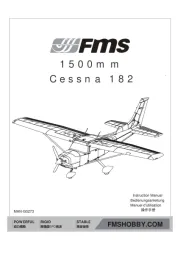
12 Augustus 2025
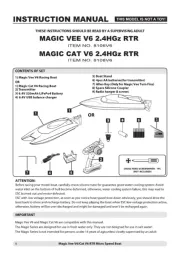
28 Juli 2025
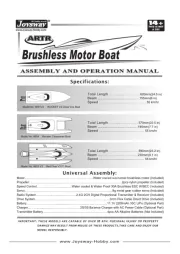
28 Juli 2025
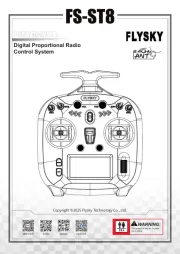
28 Juli 2025
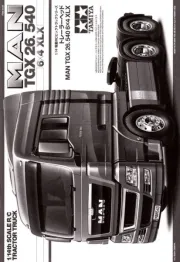
9 Juli 2025
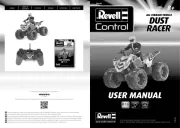
8 Juli 2025
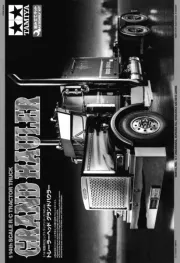
8 Juli 2025
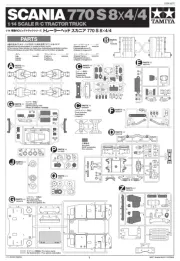
7 Juli 2025